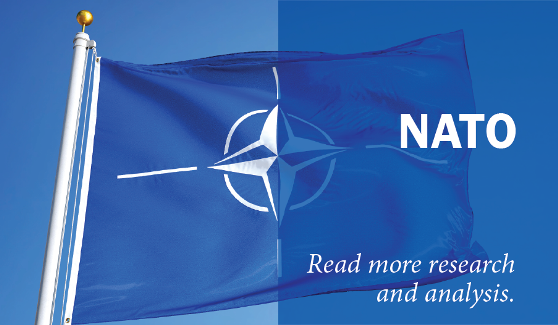Transatlantic Fragmentations and Policy Adaptation: The Security of Europe in 2025
Photo credit: Rokas Tenys / Shutterstock.com
 The 2016 NATO Summit in Warsaw was designed around the concept of strategic adaptation. The security environment in which the NATO allies operate has indeed experienced major transformations in recent years, some of which was caused by transatlantic partners themselves. The lessons learned from the recent strategic surprises and wake-up calls may be contradictory in nature. One lesson is that more humility is in order, as the strategic community can seldom pretend to be able to anticipate — and even less predict — forthcoming events and crises. At the same time, recent surprises have reaffirmed the necessity for policymakers to better prepare for unexpected strategic changes, in order to use future disruptions to their advantage. Faced with a multiplicity of security challenges in the European neighborhoods, transatlantic partners have often failed to be proactive, and political leaders have been reluctant to choose either intervention or non-intervention.
The 2016 NATO Summit in Warsaw was designed around the concept of strategic adaptation. The security environment in which the NATO allies operate has indeed experienced major transformations in recent years, some of which was caused by transatlantic partners themselves. The lessons learned from the recent strategic surprises and wake-up calls may be contradictory in nature. One lesson is that more humility is in order, as the strategic community can seldom pretend to be able to anticipate — and even less predict — forthcoming events and crises. At the same time, recent surprises have reaffirmed the necessity for policymakers to better prepare for unexpected strategic changes, in order to use future disruptions to their advantage. Faced with a multiplicity of security challenges in the European neighborhoods, transatlantic partners have often failed to be proactive, and political leaders have been reluctant to choose either intervention or non-intervention.
Looking at three different trends and their possible evolutions until 2025, The German Marshall Fund of the United States developed a scenario-exercise, involving U.S. and European policymakers, experts, and private sector representatives, aimed at presenting a credible vision for the future of transatlantic security cooperation. After the shocks of the Brexit referendum and the election of Donald Trump, and in the midst of a crucial electoral year in Europe, the terms of the transatlantic partnership are indeed put into question. For Europeans, the key idea is now to consider the trade-offs that they will have to accept in order to preserve their core interests in this new context. In the United States, the main issue concerns the attitude toward the liberal international order and the way Washington will support the norms and values on which the order has been built since the end of World War II. On both sides of the Atlantic, the political landscape is defined by an acute feeling of uncertainty, and many share the idea that the current period constitutes a turning point in the history of the transatlantic partnership. The following three themes have been used to consider the various strategic developments that will frame transatlantic cooperation in 2025.
Central to the evolution of the transatlantic relationship, the articulation of domestic politics and foreign policy in the European realm is the first issue studied in the scenario exercise. Will the European Union be able to weather the current storm? While populist and revisionist parties increase their influence at the domestic level in many countries around the continent, the potential implications for the European project and for the role of Europe in the Alliance cannot be underestimated.
The “Russian Test” is the second theme of this vision for 2025. After the intervention in Georgia in 2008, and more intensively after the Ukraine and Syrian crises, rising tensions between Moscow and transatlantic allies led to a situation unknown since the Cold War. The election of Donald Trump may have changed significantly the terms of this relationship, which will continue to be decisive for the future of the Alliance.
Finally, the future of transatlantic military interventions is the third issue of this study. The lessons learned from recent operations in Afghanistan, Iraq, Libya, Mali, and Syria will define the way transatlantic partners — both within NATO and through ad hoc coalitions — will consider military interventions in coming years, and more generally the tools that policymakers will be able to use in order to address forthcoming out-of-area crises.
Refusing the general sense of pessimism, however, these scenarios focus on “the most positive and realistic feasible vision” for the next years. Around a series of transatlantic, European, and external variables, the following pieces develop original perspectives on possible political, economic, military, and environmental dynamics that will affect transatlantic cooperation and NATO. Read separately or as a comprehensive report, they provide insightful ideas on the challenges and opportunities ahead for transatlantic partners.